Being located at a driving range, the two practice questions which pop up more often than not…
- What difference do these balls make?
- Is there a difference between hitting off mats or grass?
Now the first question of range balls we are going to tackle in a few weeks with another blog. But the big question today is what are the differences between driving range mats or grass?
Background
Artificial range mats are mainly used for ease of maintenance. No reliant on weather is required and heavy range traffic does not lead to divots all over the place! However, in many sports we try and recreate practice as close to the real environment as possible. So, the question can be asked… is there a variance/difference between shots hit off fairway grass and driving range mats.
Case studies
https://blog.trackmangolf.com/mats-vs-grass-whats-difference/
Using Trackman, Ryan Johnson & Greg Mathewson conducted a brief and small study on the effects between grass and mats. They used a +2 handicap golfer to try and reduce human variance between each swing. After ten shots on the driving range, they moved over to the grass tees for another ten shots.
Over the ten shots, the average between launch angle changed 2.7* and spin by nearly 2000rpm. To put this in perspective, if we saw this change in a fitting we would deem this hugely significant. After looking at the club data, there was minimal variance in delivery between the two surfaces.
https://www.youtube.com/watch?v=F-Nhl9CKAAY
Using GCQuad, Tour Experience Golf (awesome channel for you YouTube golfers) did a similar test to the guys above. Once again, they used a small sample size of one person and only 6 shots across mat and grass. However, they found completely different results… spin and launch angle were almost identical.
Why the difference in results?
First of all, the sample size is too small to take both data sets with more than a pinch of salt. Second, the types of mat they used was different. This is a huge factor to consider as type of artificial mat can change drastically, therefore changing how the club and ball interact off them. Third, the person they used may deliver the club differently (more or less inconsistent, inside or outside, steep or shallow etc) which could also affect results.
So what does this mean to me?
Unfortunately, there is no definitive answer to how a range mat might differ from grass. However, we can make some good guesses on what might change and what to look out for when practicing!
My own thoughts
From personal experience, listening to players and the current case studies, here are my thoughts…
Lie and loft angle
Lie angle is one of the most important considerations of your clubs. It hugely influences start direction and if wrong can lead to mis-intended shots. Loft is also very important and can affect spin and launch conditions. If the range mats you practice on are typically very firm and you have soft forged clubs, over time this will move with the clubhead and affect lie and loft.

An experienced golfer came in recently looking for new wedges, so I measured his current PW loft so we could look at progressing his lofts consistently. His lie and loft angles both had over 2.5* difference to his original spec. After a brief discussion, he highlighted how he practices a lot off a firm mat at his golf club and uses his PW and 7iron. After measuring his 9iron (control) and 7iron (practice club) we saw minimal differences in the 9iron and in line with his PW, sizable differences in his 7iron.
Type of mat
If you are in a position to select which type of mat you hit from, use that decision wisely! I believe the softer the mat or the more ‘give’ it has, the closer resemblance to grass. Firm mats tend to make the club bounce if strike is slightly behind the ball, giving a false ball flight or outcome of your shot. Here at Norwich Family Golf Centre, we are very lucky to have a selection of range mats. When I am practicing outside our teaching bays, I like to hit off the mat outside which was provided by Huxley golf. It feels soft enough to get a solid contact, but firm enough so it does not wear and tear easily.
Also, with firm mats we often get negative feedback on wrist and elbow pains. However, this could be technique related or potentially the mind making a false connection between hard surface and these types of pains.
Furthermore, there could be an argument against soft mats in regard to spin rate. One of key variables with spin is something getting stuck between club and grooves. This is why we often get a ‘flyer’ out of the rough, because grass stops the ball connecting cleanly with the grooves on your club. If the mat is too soft, there is potential for fibres to raise above the surface and sit behind the ball.

If your practice facility has mats like this, probably not the best place to practice!
Outcome focus
Lastly, it all depends on what you are looking for in your practice session! If you are solely focusing on your centredness of strike and check your lie and loft angles, you will be fine off any mat! However, if you are looking at outcome of shot (flight, curvature, distance) than these can all be affected by the quality of mat.
Conclusions
Using the above information, next time you have a practice session, take into consideration the mat when you select which bay you use! Try a mixture of mats and make an informed decision on which you feel mimics your regular golf course. If you have access to a grass driving range, go you! Make sure you have good divot patterns which make it easier for repair and maintenance.
How did we use this information?
For our fitting suite, we did not just order any mat at the right price! We carefully selected the surface to allow as similar results as you would see on the golf course.
Same for our new PAR coaching lab, we chose a surface which would feel as realistic to fairway grass as possible. The same surface has been installed at various golf locations including the belfry. Under the hitting surface is a real soft underlay which allows enough give and feel to perform as good as grass.
Lewis
@LClarkePCoach




